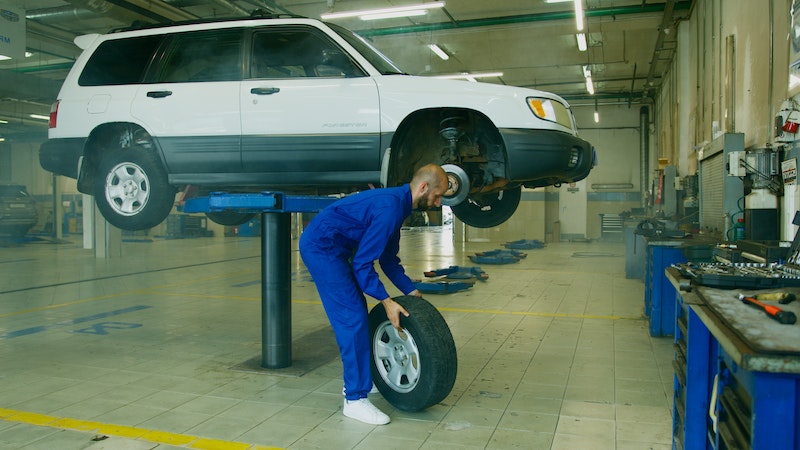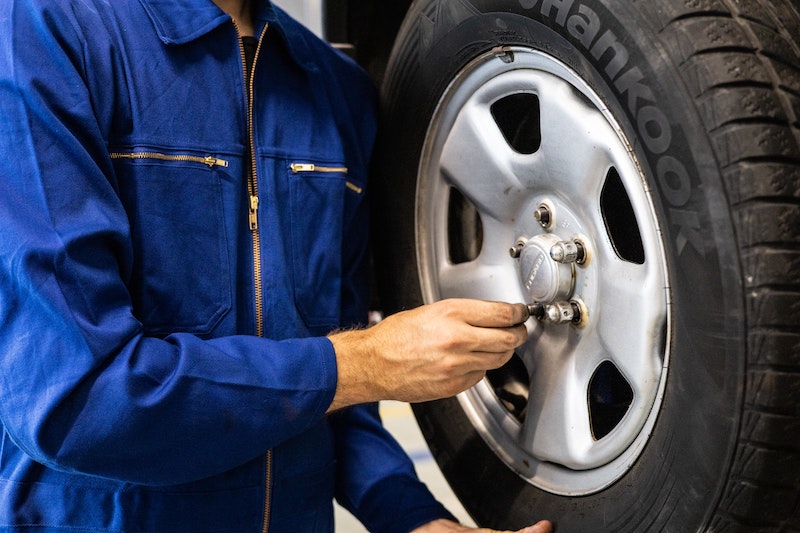How Much Does It Cost to Repair a Tire?
What you can expect to pay to repair or replace your damaged tire at the repair shop.

What you can expect to pay to repair or replace your damaged tire at the repair shop.

You’re about to head out for your daily commute, only to discover a dreaded flat tire. Your mind instantly darts to questions like—what the heck am I supposed to do now? And how much is it going to cost to fix this?
The average cost to repair a tire in 2025 ranges from about $20 to $50, but some specialized fixes can cost $100 or more.
Let’s get into the nitty gritty of what goes into the cost of tire repair, so you can navigate these literal road bumps with confidence.

What does this mean? Your tire has lost all its air and is, well… flat.
Typical causes:
How is it fixed and how much does it cost? Depending on the cause, it may require a patch, plug, or even a replacement. Typically, a patch or plug costs roughly $20 and $50, while a new tire can run upwards of $100. Sidewall damage often can’t be safely patched, which means you’ll probably need a new tire.
What does this mean? The part of your tire that grips the rim is damaged.
Typical causes: Your tire was improperly mounted when it was put on the rim, or improperly dismounted when it was removed; hitting a pothole at the wrong angle can also cause this damage.
How is it fixed and how much does it cost? This damage might require a new tire or resealing the bead. The cost can range from $50 to $150, depending on the severity and tire type.
What does this mean? The grooves on your tire, which give it grip on the road, are getting shallow.
Typical causes: Regular driving wears out the tread over time. Uneven wear can be caused by improper tire pressure, misalignment, or failing to rotate the tires.
How is it fixed and how much does it cost? If wear is extreme, you’ll need a tire replacement. For minor issues, a tire rotation (changing the position of tires on your car) can help, costing around $40 to $80. A new tire can be upwards of $100.

Taking some preventative measures could save you a trip to the repair shop. Consider these quick tips:
Keep in mind: Tire damage isn’t 100% avoidable. Even with the best preventative car maintenance, sometimes a stray nail or an unavoidable pothole can result in damage.
It costs about $20 to $50 on average to repair a damaged tire, but there are several factors that can influence the final bill, including:
Shop around for quotes, and prepare a list of questions you want to ask, before handing over your keys to a repair shop.

There are a few different actions that repair shops might take for a damaged tire. Let’s break down what they mean. Tire patch: When your tire has punctures in the main tread area, it can be patched using a piece of rubber placed on the inside of the tire to cover a hole. Tire plug: When your tire has small holes in it, pushing a sticky, rubbery string into the punctures from the outside can be a temporary solution, until a patch can be applied or the tire can be replaced. Tire replacement: If the damage to the tire is too severe for patching or plugging—like sidewall damage, or when the tread is too worn down for safe driving—swapping the damaged tire out with a completely new one is the recommended choice.
No. You should never drive on a flat tire—unless your car has run-flat tires (RFT), which in some cases you can drive on for up to 50 miles at a lower speed, so you can get to a safe place or a repair shop. Driving on a flat tire can damage your rim and make it more difficult to control your car. If you have a flat tire, you should safely pull over to the side of the road and call for roadside assistance. When you drive with Lemonade Car and include roadside assistance coverage on your policy, we’ll send the cavalry to help change out your flat tire (if you have an inflated spare tire), or give it a tow to the repair shop.
If your tire is obviously flat, there’s not much mystery. But also look out for these signs that might indicate your tire needs to be repaired:
If you notice any of these signs, you should have your tire inspected by a certified technician right away.
You shouldn’t drive more than 10,000 miles without getting your tires rotated. Rotating your tires helps to evenly wear them down and prevents them from cupping or feathering.
Here are some guidelines to help you determine when to replace your tires:
Arizona, Colorado, Illinois, Indiana, Ohio, Oregon, Tennessee, Texas, and Washington.
A few quick words, because we <3 our lawyers: This post is general in nature, and any statement in it doesn’t alter the terms, conditions, exclusions, or limitations of policies issued by Lemonade, which differ according to your state of residence. You’re encouraged to discuss your specific circumstances with your own professional advisors. The purpose of this post is merely to provide you with info and insights you can use to make such discussions more productive! Naturally, all comments by, or references to, third parties represent their own views, and Lemonade assumes no responsibility for them. Coverage and discounts may not be available in all states.
Please note: Lemonade articles and other editorial content are meant for educational purposes only, and should not be relied upon instead of professional legal, insurance or financial advice. The content of these educational articles does not alter the terms, conditions, exclusions, or limitations of policies issued by Lemonade, which differ according to your state of residence. While we regularly review previously published content to ensure it is accurate and up-to-date, there may be instances in which legal conditions or policy details have changed since publication. Any hypothetical examples used in Lemonade editorial content are purely expositional. Hypothetical examples do not alter or bind Lemonade to any application of your insurance policy to the particular facts and circumstances of any actual claim.